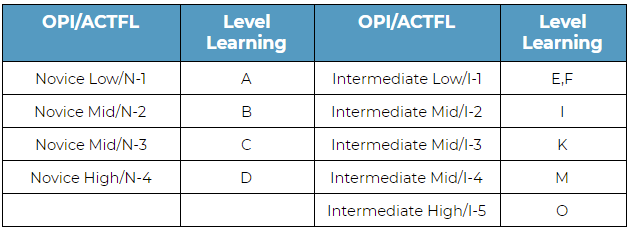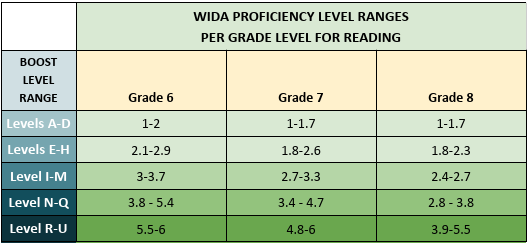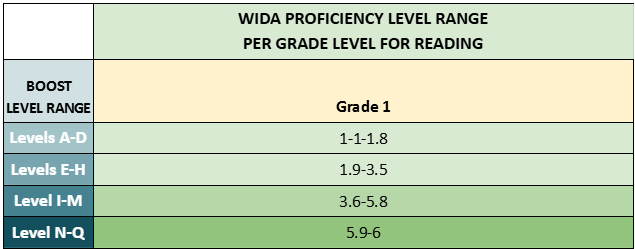Standards Mapping
Based on well researched language frameworks, the Level Learning team developed a set of systematic and demonstrable interpersonal oral, reading and writing levels and standards.
-
ACTFL Mapping
- Common Core Standards
- Florida B.E.S.T. Standards
- Text Complexity
- Boost and Get Ready!
ACTFL Proficiency Level Mapping to Level Learning
Reading

Interpersonal Oral

Writing

Level Learning’s levels and standards were developed based on well researched frameworks. Our reading and writing standards are developed and further unpacked from the Common Core Language Arts Standards. And our oral standards are developed and further unpacked from the ACTFL interpersonal oral CAN-DO statements. The diagrams below show how our standards are organized.
Level Learning added on the following two key points to support teachers carry out systematic and explicit differentiated instruction in a time efficient manner:
- Instead of grade level, each one of our reading and writing standards is placed in context of a specific text complexity level. This text complexity level serves two purposes:
- Skills such as inferences have different meaning when paired with text of different complexity levels (e.g. inference in a picture book vs. inference in a chapter book). It is important to contextualize each standard with the appropriate level of text.
- We expect students to be able to work through multiple text complexity levels per school year. These levels allow teachers to monitor progress and differentiate their instruction all through the school year.
- Each standard/category in each text complexity level is further unpacked into a set of actionable and demonstratable learning objectives. Each learning objective is supported with :
- teaching resources such as assessments, analytics, mini-lessons, activities and
- independent practice resources such as books, quizzes, writing prompts, interactive oral games.
Language and Reading Standards


Oral and Writing Standards


Level Learning’s standards address the same components and skills as the Florida B.E.S.T. standards. The diagrams (see below) of standard encoding of the Florida’s B.E.S.T standards and the Level Learning standards show the same components and skills are covered in the 4 language domains: listening, speaking, reading and writing. Details of the mapping can be found here.
Level Learning added on the following two key points to support teachers carry out systematic and explicit differentiated instruction in a time efficient manner:
- Instead of grade level, each one of our reading and writing standards is placed in context of a specific text complexity level. This text complexity level serves two purposes:
- Skills such as inferences have different meaning when paired with text of different complexity levels (e.g. inference in a picture book vs. inference in a chapter book). It is important to contextualize each standard with the appropriate level of text.
- We expect students to be able to work through multiple text complexity levels per school year. These levels allow teachers to monitor progress and differentiate their instruction all through the school year.
- Each standard/category in each text complexity level is further unpacked into a set of actionable and demonstratable learning objectives. Each learning objective is supported with :
- teaching resources such as assessments, analytics, mini-lessons, activities and
- independent practice resources such as books, quizzes, writing prompts, interactive oral games.
Florida B.E.S.T

Level Learning





Boost can be used to “stretch” Get Ready!
Boost is a data-driven digital-led with print support teaching/learning/assessment platform that develops reading, writing, speaking and listening skills. Boost supports both teacher-led instructional resources as well as data-driven personalized independent practice in all skill areas. This document provides an overview on how different sections of Boost can supplement Get Ready! Elementary, Middle and High School. Boost aligns with Get Ready! and provides instruction and practice for more levels of proficiencies to meet student’s needs. This document assumes the user has access to both Get Ready! and Boost and it shows where to locate specific Boost resources.
The documents below show how different content in Boost connects with each unit of Get Ready! Elementary, Middle and High School. Click different TABs in each spreadsheet to see the mapping of each unit.
- Boost Mapping to Get Ready! Sail
- Boost Mapping to Get Ready! Soar
- Boost Mapping to Get Ready! Grades 6-8
- Boost Mapping to Get Ready! Grades 9-12











